The term “automatic” does not mean that the movement is powered by a battery but that it does not need to be wound manually. For it to work, all you have to do is wear your watch on your wrist and go about your daily business!
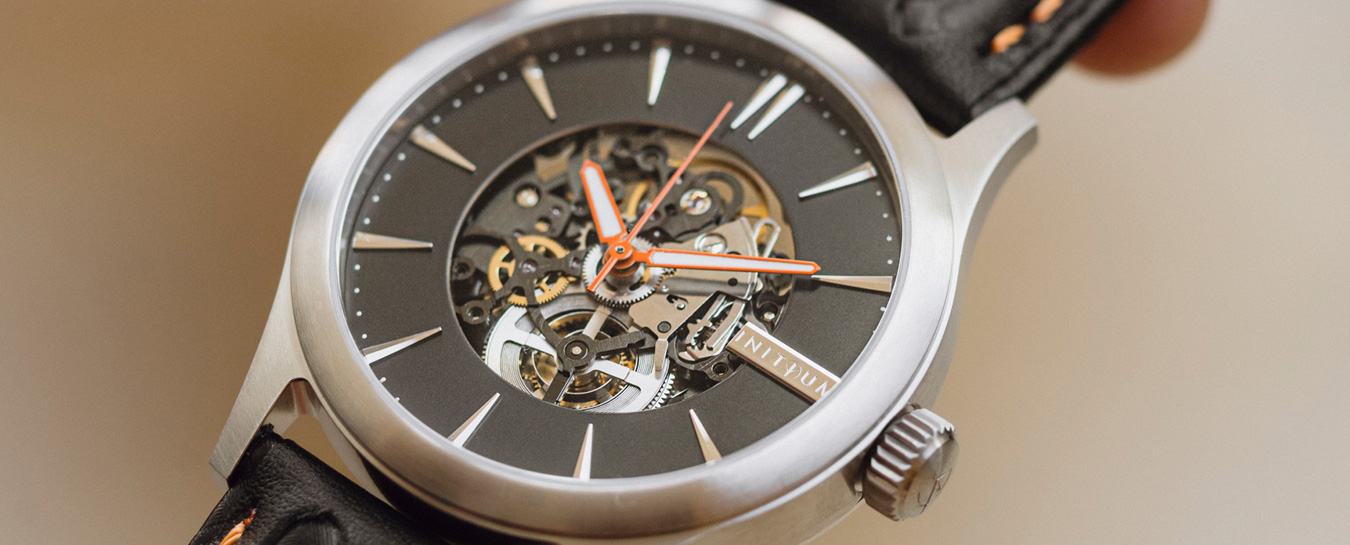
An automatic movement and a manual movement use the same basic mechanisms to measure and display the time. The difference concerns how the mainspring is wound. In this article, we’ll take a closer look at this improvement and explain how it works. The photo (above) shows an example of a watch with an automatic movement.
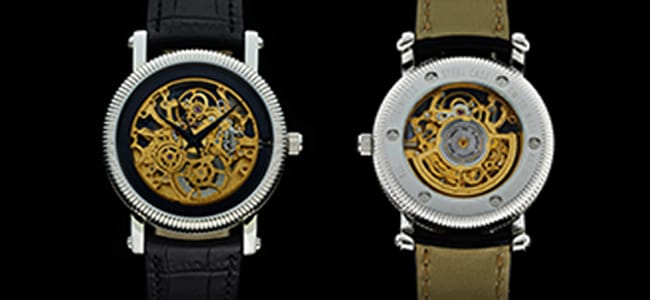
When did the automatic mechanical movement originate?
First things first: the question of who invented the automatic movement is still disputed. Some say it was Abraham-Louis Perrelet (1777) while others credit Hubert Sarton (1778). Either way, automatic winding dates back several centuries. It was first incorporated into a watch by an eighteenth-century French inventor, Pierre Joseph de Rivaz, and perfected by John Harwood in the early twentieth century. Harwood, a watch repairer from Bolton near Manchester in England, developed the very first wristwatch with automatic winding.
Harwood’s system used a weight that swung back and forth through 130° with the movement of the wearer’s wrist. The photo (below) shows Harwood and an example of his movement.
In 1930, Rolex improved Harwood’s system for the legendary Oyster Perpetual by mounting a semi-circular weight in the centre of the movement where it could rotate through 360°. The Swiss firm also increased the amount of energy stored in the mainspring to provide 35 hours of power reserve.
Today’s automatic mechanical watches have a power reserve that can range from 30 hours to one month. Every movement has a different power reserve.

The main components
Before explaining how automatic winding functions, we’ll start by describing the most important components.
Rotor
The rotor is a semi-circular weight that is mounted on the movement. It’s also known as the oscillating weight. The rotor swings through 360° thanks to the movements of the watch on the wrist. Through a series of gears, the movement of the rotor winds the mainspring which supplies the watch with mechanical energy.

Reverser mechanism
The reverser mechanism sits between the rotor and the gears. It enables the rotor to wind the mainspring no matter which way it turns. Various reverser mechanisms exist, the best-known being the pawl-winding system. This comprises two wheels, each made up of a top disc and a bottom disc. These discs are connected by a springless pawl (d) that unclicks one wheel then the other depending on the direction of rotation.
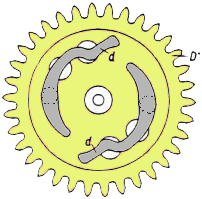
Crown
The crown is a button or wheel on the outside of the case. When the crown is pushed in, it can be turned to manually wind the mainspring. When it’s pulled out it can be turned to set the hands.
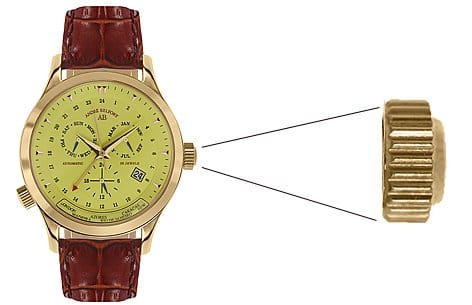
Mainspring
This is a coiled strip of metal that stores energy when wound and gradually releases energy as it unwinds. This energy is transferred through the movement gears.
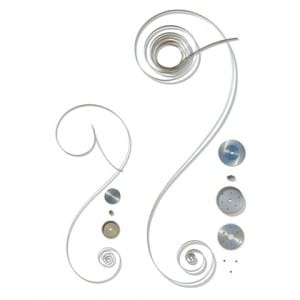
Geartrain
This series of gears transfers energy from the mainspring to the escape wheel.

Escapement
This is the part that “divides” time into equal fractions. At regular intervals, the escape wheel releases the energy supplied by the gears to the lever. Synthetic ruby pallets on the lever reduce friction between the lever and the escape wheel as they come into contact. The familiar ticking of the watch is in fact the sound of these pallets striking the teeth of the escape wheel. This type of escapement is called a Swiss lever escapement and is still widely used. In recent years, many innovations have been made to the escapement, often building on the properties of modern materials such as silicon.
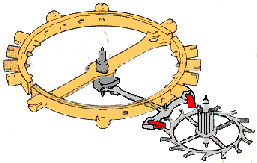
Balance wheel
This is the regulating organ of the watch, and is often referred to as the heart of the movement because it “beats” between 5 and 10 times a second. The balance wheel is assembled with the balance spring, one end of which is attached to the balance wheel. Each time the balance wheel swings in one direction, the “in-out” movement of the balance spring brings it back to its centre position.

Jewels
These are hard synthetic stones composed of corundum and aluminium oxide. Jewels are fitted at high friction points such as the centre of a wheel that is constantly rotating in order to reduce rubbing and wear. The jewels in early movements were genuine rubies. Given the high price of ruby, and thanks to new processes, today’s watch movements use synthetic jewels. These “artificial” jewels are actually colourless but are tinted red to make them more attractive and as a reminder of the original precious stone.
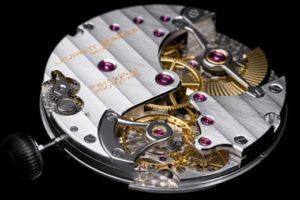
How does an automatic movement work?
Now that we’re familiar with the main components of an automatic watch, we’ll break down the six stages required to count time and drive the hands that display hours, minutes and seconds on the dial.
Step 1
The wearer’s wrist movements cause the rotor to turn and, through gears, wind the mainspring. It’s also possible to wind the mainspring via the crown, as on a manual watch.
Step 2
The gears in the geartrain transfer this energy to the escapement.
Step 3
The escapement provides energy at regular intervals to the balance wheel.
Step 4
The pallets on the lever push the balance wheel in one direction then the other. This maintains the balance wheel’s oscillations, still using the energy that originates in the mainspring. The latter allows the continuous movement of the balance wheel and comes from the base of the barrel spring.
Step 5
Each swing of the balance wheel advances the geartrain a set amount to drive the hands mounted on the gears.
Step 6
The hands turn on the dial. Reduction gears mean, for example, that the minute hand will turn faster than the hour hand.
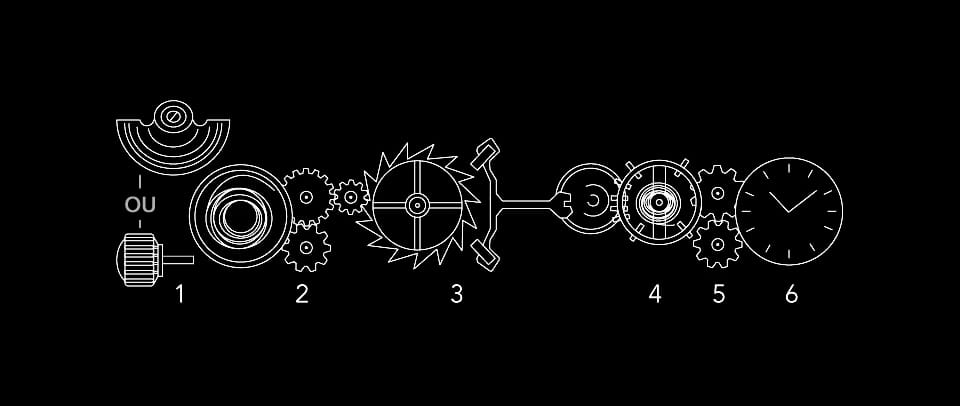
We hope this brief description of how an automatic watch works was useful. If you’d like to learn more about what goes on under the dial, take a look at our different classes where you can assemble an automatic or manual movement. As well as giving you the opportunity to select the components for your very own Swiss watch, Initium also give you the choice between classes using a manual movement and classes that use an automatic movement.